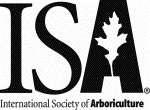
| Current Articles |
| Browse Archives |
| Search |
| Contact Us |
| AUF Home |
 |
Arboriculture & Urban Forestry Online
| Volume 6, Issue 10 —
October 1980
https://www.isa-arbor.com/Publications/Arboriculture-Urban-Forestry |
|
Transplanting Method Influences Survival and Growth of Bare-Root Coniferous Nursery Stock (View PDF) Glen P. Lumis and A. Gail Johnson Abstract: The survival and subsequent growth of conifers transplanted bare-root using several methods to reduce moisture loss were compared to that of conventional balled and burlapped (B&B) plants. Treating plants with foliar antidesiccant (Wilt-Pruf® NCF) prior to digging combined with storage in Plant Fresh® polyethylene bags was a satisfactory method of bare-root transplanting. All bare-root transplanted Juniperus virginiaia L. 'Grey Rock' (60-70 cm), stored for 5 days, and Juniperus chinensis L. 'Keteleeri' (1.5-1.75 m), stored for 16 days, survived and grew as well as the control B&B plants. Taxus x media Rehd. 'Andersoni' (50-60 cm) treated with foliage antidesiccant and/or enclosed in poly bags and stored for 5 days had foliar injury similar to B&B plants. Quality was poorer for Taxus plants treated with only root antidesiccant. Bare-root transplanting of Picea abies Karst. (1.25-1.5m), stored for 14 days, resulted in some foliar injury and reduced shoot growth compared to B&B plants, however, plants treated with foliar antidesiccant and enclosed in poly bags were of acceptable quality. Thuja occidentalis L. 'Pyramidalis' (1.0-1.25m) stored for 14 days and transplanted bare-root were of unacceptable quality. Keywords: |
Current Articles
| Browse Archives | Search | AUF Home | ISA Home
| Get Acrobat